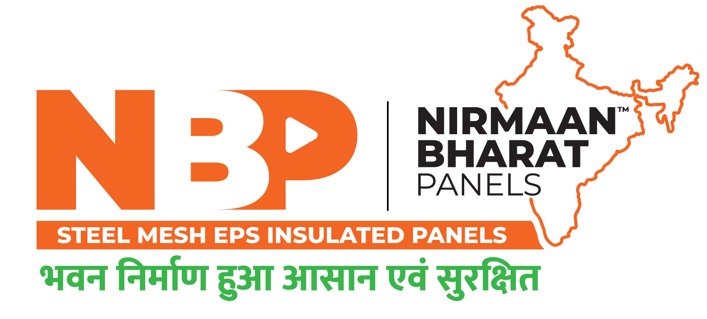Skyscrapers have long been the hallmark of urban development, signifying progress, innovation, and the unyielding human spirit to reach for the skies. As cities become more congested and the demand for vertical living and working spaces increases, the construction industry faces the dual challenge of building taller structures while ensuring they are sustainable, safe, and efficient. One promising solution lies in the use of Expanded Polystyrene (EPS) panels. These lightweight yet robust materials offer a multitude of benefits, including enhanced structural integrity and reduced overall weight. This blog post delves into how EPS panels are revolutionizing skyscraper construction and what this means for the future of urban landscapes.
Table of Contents
ToggleUnderstanding EPS Panels
Expanded Polystyrene (EPS) is a lightweight, rigid, plastic foam insulation material produced from solid beads of polystyrene. EPS panels are created by expanding the beads and fusing them into large blocks, which can then be cut into sheets or customized shapes. These panels are known for their excellent thermal insulation properties, lightweight nature, and versatility, making them a popular choice in a variety of construction applications.
Enhancing Structural Integrity
One of the critical advantages of EPS panels is their ability to enhance the structural integrity of buildings. In skyscraper construction, this is particularly important due to the immense forces exerted by wind, seismic activity, and the sheer weight of the building itself.
Load Distribution: EPS panels are incredibly strong relative to their weight. When used in conjunction with traditional materials like steel and concrete, they can significantly improve load distribution. This composite approach ensures that the building can better withstand external forces, reducing the likelihood of structural failure.
Seismic Resistance: In earthquake-prone areas, the flexibility and energy-absorbing properties of EPS panels provide an additional layer of safety. The panels can deform without breaking, absorbing and dissipating seismic energy, which helps prevent catastrophic failure of the building’s structure.
Thermal Insulation: Good thermal performance contributes to the structural integrity by preventing thermal bridging and reducing stress on structural elements caused by temperature fluctuations. EPS panels have high R-values, meaning they are excellent insulators, maintaining consistent internal temperatures and reducing the strain on heating and cooling systems.
Reducing Weight
One of the most significant benefits of using EPS panels in skyscraper construction is the dramatic reduction in overall weight. Traditional construction materials like concrete and steel are heavy, contributing to higher foundation loads and construction costs. EPS panels offer a lightweight alternative without compromising strength and durability.
Foundation and Substructure:
By incorporating EPS panels, the overall weight of the building is reduced, which translates to lower demands on the foundation and substructure. This reduction can lead to substantial cost savings in materials and labor during the construction phase.
Transport and Handling:
The lightweight nature of EPS panels makes them easier to transport and handle on-site. This can streamline the construction process, reducing the need for heavy machinery and lowering the risk of workplace injuries. Additionally, lighter materials reduce fuel consumption and emissions during transport, contributing to a more sustainable construction practice.
Higher Buildings:
The reduction in weight also opens the possibility of building taller structures without proportionally increasing the load on lower floors. This is a crucial factor as urban areas continue to grow and the demand for high-rise buildings increases. With EPS panels, architects and engineers have more flexibility to design taller buildings with innovative shapes and structures.

Environmental Impact and Sustainability
As the construction industry moves towards more sustainable practices, EPS panels stand out for their environmental benefits. Sustainability in skyscraper construction is not just about the materials used but also about energy efficiency and reducing the carbon footprint throughout the building’s lifecycle.
Energy Efficiency: EPS panels are excellent insulators, which significantly reduces the energy required for heating and cooling. This energy efficiency translates to lower operational costs and a reduced carbon footprint for the building. In the context of a skyscraper, where energy consumption can be substantial, this efficiency is a critical factor in achieving sustainability goals.
Recyclability: EPS is 100% recyclable, and many manufacturers have established recycling programs to ensure that waste EPS is reprocessed into new products. This closed-loop system minimizes waste and supports a circular economy, making EPS panels an environmentally friendly choice.
Reduced Material Use: Because EPS panels provide significant strength and insulation with less material, they help reduce the overall material usage in construction. This reduction not only lowers costs but also decreases the environmental impact associated with material extraction, processing, and transportation.
Innovations and Future Directions
The future of skyscraper construction with EPS panels looks promising, with ongoing innovations aimed at enhancing their properties and expanding their applications.
Composite Materials: Research is underway to combine EPS with other materials to create composites that offer even greater strength and durability. These composites could revolutionize the way we think about building materials, making skyscrapers safer and more resilient.
Smart Panels: Integrating smart technology into EPS panels is another exciting development. These smart panels could include sensors to monitor structural health, energy usage, and environmental conditions in real-time, providing valuable data for building management and maintenance.
3D Printing: The advent of 3D printing technology presents new possibilities for using EPS in construction. 3D printing allows for precise customization of panel shapes and sizes, reducing waste and improving the efficiency of the construction process.
Conclusion
The use of EPS panels in skyscraper construction represents a significant leap forward in building technology. By enhancing structural integrity and reducing weight, these panels address some of the most pressing challenges in modern construction. Additionally, their environmental benefits align with the growing emphasis on sustainability in the industry.
As we look to the future, the continued innovation and adoption of EPS panels hold the potential to reshape our urban landscapes, making skyscrapers not only taller and stronger but also more efficient and environmentally friendly. The integration of EPS panels in skyscraper construction is not just a trend but a transformative approach that promises to redefine the boundaries of architectural and engineering possibilities.
Also, read
Fortify Your Walls Impact-Resistant EPS Panels for Structural Integrity


